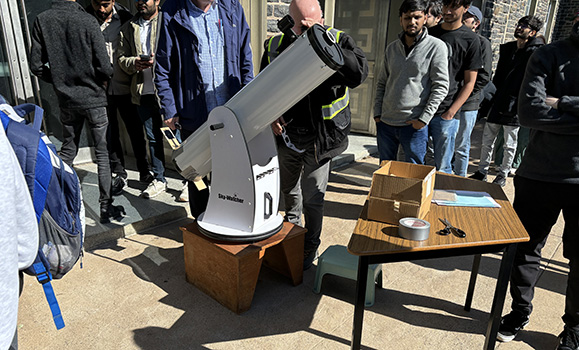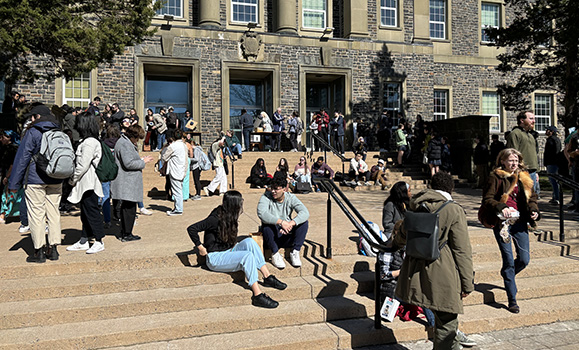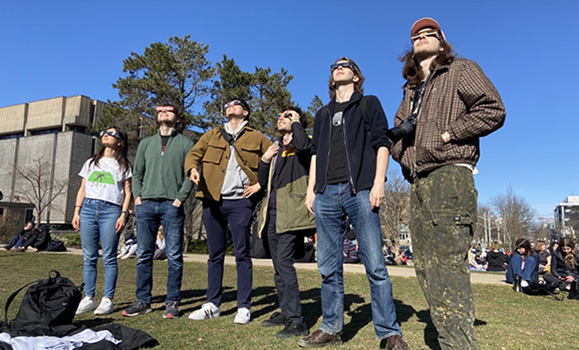Members of the Dalhousie community took time out from preparing for the winter term exam period to take in a rare total solar eclipse as it made its way across parts of Canada, Mexico, and the United States on Monday (April 8).Â
With Nova Scotia located outside the path of totality, the geographic region experiencing a total solar eclipse, there was nevertheless plenty of enthusiasm from those on campus to observe the next best thing: a partial solar eclipse in which 93 per cent of the sun was obscured by the moon.
Recommended reading: Ask an expert: The total solar eclipse, explained
As they did for 2017’s partial solar eclipse, members of the Department of Physics & Atmospheric Science organized a public viewing session outside the Sir James Dunn Building on Dalhousie’s Studley Campus. Volunteers consisting of students, faculty members, and lab technicians helped answer questions from attendees and demonstrate how to safely view the eclipse through a pair of solar filter-equipped Newtonian telescopes that allow for 40x magnification of the sun.

A Newtonian telescope. (Kenneth Conrad photo)
Dr. Sean Hartery, an instructor in the department who helped organize the afternoon event, noted that telescope viewers were impressed they could clearly perceive the roughness of the lunar surface as the moon’s coverage of the sun approached maximum. Earlier in the day, viewers could also make out sunspots near the centre of the solar disk.
Clear skies and seasonable early spring temperatures helped make the long lineups to view the telescopes bearable. Several pairs of eclipse glasses were also available for attendees to borrow and safely catch a glimpse of the sun as it became increasingly obscured by the moon.

A crowd begins to build outside the Dunn Building. (Kenneth Conrad photo)
Taking advantage of ideal conditions
“The viewing conditions honestly couldn’t be better,” said Dr. Hartery. “April is notoriously rainy and cloudy, so we were really fortunate to have the conditions we had today.”
Despite the ideal weather, Nova Scotia’s position outside the path of totality meant the corona — the outermost part of the sun’s atmosphere usually hidden by the bright light of the surface of the sun and visible only during a total solar eclipse — would not be making an appearance.
Students also took advantage of the pleasant weather to scope out prime locations on the Studley Quad from which to observe the eclipse from its beginning at 3:27 p.m. to its end at 5:44 p.m., with the day getting noticeably darker around time of maximum coverage at 4:38 p.m.
With any luck, budding astronomers were able to make the most out of Monday’s event as the next total solar eclipse visible in parts of Canada won’t occur until August 2044.

Students gathered on the Studley Quad with their eclipse glasses. (Matt Reeder photo)

